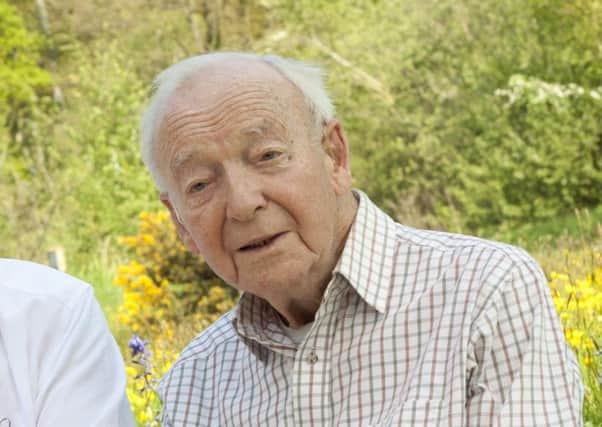Obituary: Ted Smith, CBE, conservationist


Ted Smith was a former English master who dedicated his life to preserving Britain’s natural heritage. From the late 1940s he raised awareness about unseemly developments in his home county of Lincolnshire and became instrumental in helping to establish a truly national movement for wildlife, eventually becoming general secretary of the Wildlife Trusts movement.
Smith had a powerful ally in the broadcaster and naturalist Sir David Attenborough; the two were great friends and Sir David said of Smith: “Ted was a visionary, a diplomat and, above all, a revolutionary. He understood, to a degree that verged on the magical, the diplomacies needed to co-ordinate and energise organisations. Without Ted, Britain’s natural heritage would be immensely the poorer.”
Advertisement
Hide AdAdvertisement
Hide AdArthur Edward Smith was the son of a plumber and after Queen Elizabeth’s Grammar School in Alford got a first in English at Leeds University. He taught in Leeds and Norfolk and in 1948 was appointed to a post in Adult Education in Lincolnshire. Smith, from his youth, had been a keen ornithologist and became a keen observer of the lapwing in particular.
Smith often visited Scotland and, in the 1950s, attended the committee of the Bird Observatory movement in Edinburgh. Indeed he recalled: “I discussed the possibility of starting local trusts in Scotland with George Waterston, the publisher and owner of Fair Isle. We also discussed starting trusts for the Lothians and with Elaine Bullard in Orkney.”
In 1964 the Scottish Wildlife Trust (SWT) was formed and Smith was directly involved in Scottish affairs. He has written of SWT: “Its first executive officer Bernard Gilchrist set about the task with determination forming branches.”
When he returned to Lincolnshire in 1948 Smith was immediately alarmed how the ravages of war had change the countryside and how, during hostilities, the necessity to maximise food supplies had changed the countryside of his beloved county.
Modern farming methods and the use of new pesticides such as DDT had radically changed the environment: birds and the flora and fauna were destroyed. Worse, in many ways, was the massive building programmes for houses and roads.
He brought the sad state of affairs to the notice of the authorities after visiting the impressive bird sanctuary on the Welsh island of Skokholm. There he met the botanist, Mary Goddard, who became his wife. Smith was one of the first environmentalists with a mission and founded Lincolnshire Naturalists Wildlife Trust, and, with 129 volunteers saved the Gibraltar Point - the first nature reserve. Smith always called for practical action and conserved small rural spaces – such as heaths, meadows, river beds and coasts - from wanton destruction.
In 1954 Smith told the delegates in bold terms at the Nature Conservancy’s annual meeting that “too many naturalists ignored the destruction being carried out throughout the country by developers and industrial farming methods”.
Indeed, when he joined the Wildlife Trust in 1954 the organisation was in an unhappy state.
Advertisement
Hide AdAdvertisement
Hide AdSmith turned the organisation round and set the trend for preservation of the highways and byways throughout Britain.
With his members Smith fought a rear-guard battle to halt what he called the “juggernaut” of destruction. “The idea that reserves were there for people as well as wildlife was a new concept,” he said. His attitudes were pioneering but they echoed round country folk immediately.
In the 1970s he spoke in favour of creating corridors to help animals adapt to the rapid change in the environment by allowing birds a greater freedom in the countryside. The idea was not well received when Smith first aired it but, as was often the case with his proposals, there are now more than 100 “living landscape” schemes across Britain.
Smith was well aware that he had to create a national body that would confront the authorities so they could lobby with a united voice and Smith was appointed general secretary of the Wildlife Trusts in 1975. Today, thanks to Smith’s hard work, campaigning zeal and perseverance the Wildlife Trusts have more than 800,000 members and in excess of 2,000 nature reserves.
Smith and his family often visited Scotland. He recalled a holiday in 1950 at Aviemore where they “explored the ancient pine woods of Rothiemurchus with their crested tits and crossbills and watched ptarmigan in the Lairig Ghru”.
He returned often with his daughters “up to Caithness where we listened to corncrakes at Bettyhill. In 1959 I organised a field station at Anancaun on Loch Maree in the magnificent Beinn Eighe and visited the famous Gulf Stream gardens at Inverewe.”
In 1949 he married Mary Goddard, who predeceased him. Smith, who was awarded the CBE in 1998, is survived by their two daughters, one of whom is a professor of plant science the other a spider ecologist.